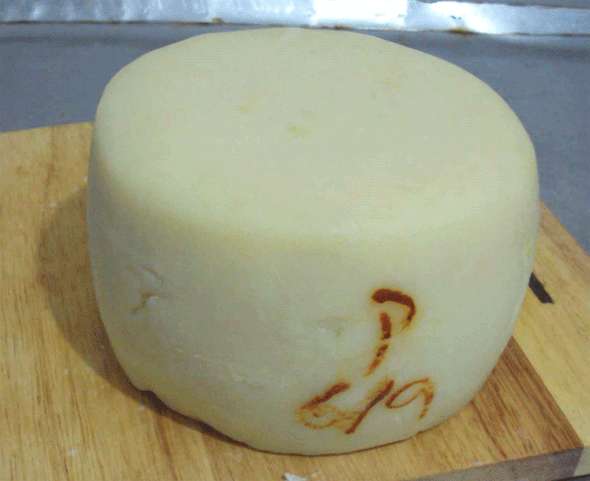Out of this came an aphorism: "A chimney's sweeper's boy could always make a fool out of every doctor in the university."

That's a great story. However, what is the significance of the Hebrew stamp? A hashgacha perhaps?
For illustrative purposes only. It's not as easy to find Hebrew-stamped cheese as you'd think (photo credit):

The passage is from Memoirs of a social monster; or, the history of Charles Price, Otherwise Bolingbroke, otherwise Johnson, otherwise Parks, otherwise Wigmore, otherwise Brank, otherwise Wilmott, otherwise Williams, otherwise Schutz, otherwise Trevors, otherwise Polton, otherwise Taylor, otherwise Powel, &c. &c. &c. and commonly called Old Patch. Containing an accurate account of the astonishing fraud and ingenious forgeries of that truly great man on the Governor and Company of the Bank of England for a Period of Fifty-Five Years. (London 1786)





"imprinted with his own father's name"
ReplyDeleteIt sounds like a means of identifying the cheese's source, like you say, a Hashgacha of sorts, though not a Hashgacha in the modern sense.
Well, yes. A means of identifying the manufacturer (or rather, he husband ;-) which I assume functioned in two ways, as a seller's mark but also an indicator that it was kosher.
ReplyDeleteWas the father's name Yisroel, by any chance?
ReplyDeleteRuth, this is the only trace of the story that I have been able to find, and as you can see unfortunately it does not say.
ReplyDeleteHowever, there's a slight possibility that it did - but it would be a sheer guess. According to the story these cheeses were not only presented to various professors, but one was specifically given to the Regius Professor of Hebrew, who certainly could read Hebrew. I suppose it's possible that imprinted on the cheese was something like גבינה כשר מישראל, or even מא. ישראל (if his name was "A. Israel," let's say) and because they claimed it came from Terra Sancta they understood it to mean from Eretz Israel. This is possible, but I just don't know. For what it's worth, a little bit of googling revealed that in the 18th century kosher cheeses actually were an Amsterdam export.
Why, do you know of an 18th century Amsterdam cheesemaker named Yisroel? :-)
Actually, my above conjecture reminds me of a story. One time I flew to Israel and there was a very noticeable Christian family of some kind (they were distinguishable by their manner of dress, large number of kids and so forth). As we walked through the gates in Ben Gurion airport one of the kids (who evidently could read and understand some Hebrew) pointed out to another: "Look, the sign says "Peace unto the Jews" - שלום לישראל!" Of course it said "Welcome to Israel!" but given their expectation and that it could also be read that way...
ReplyDeleteOnly works with "A. Israel". Just ישראל on its own, to mean the geographical area pre-1948, sounds very strange to my Sprachgefühl.
ReplyDeleteYes, it certainly does. But its not out of the realm of the possible. But of course we're not discussing the facts, but trying to smush in a possibility that it said Yisrael.
ReplyDelete